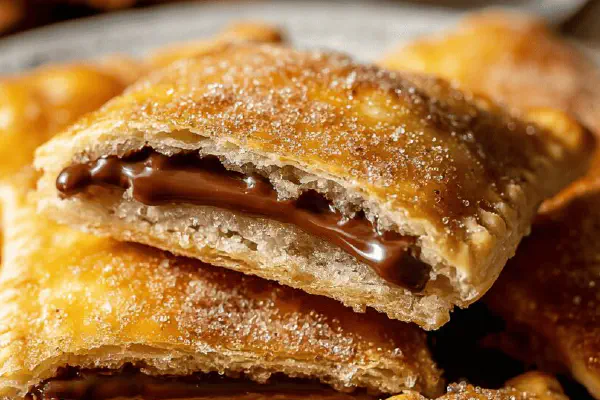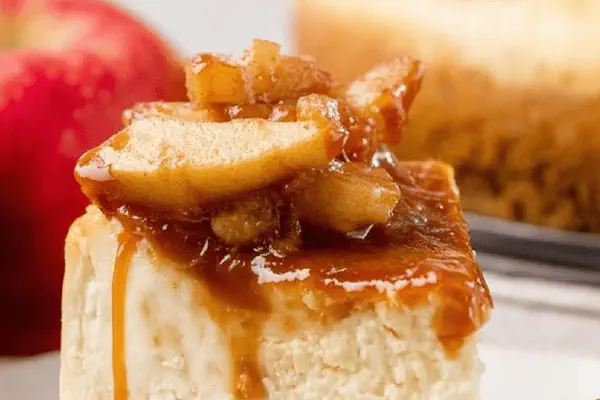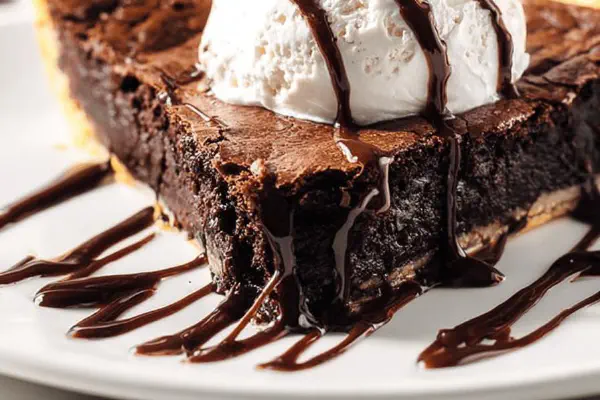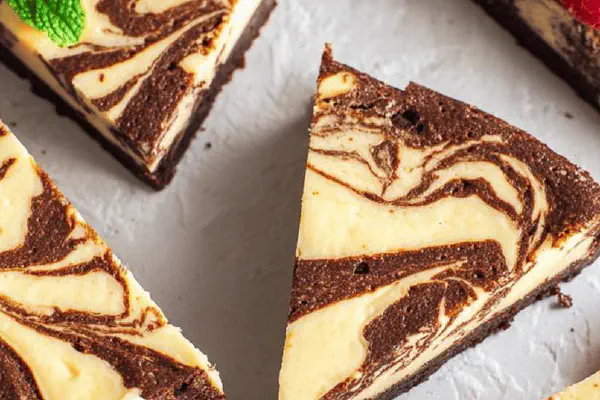Brown Sugar Spinach Pop Tarts

By Emma
Certified Culinary Professional
Ingredients
Dough
- 1 1/2 cups all-purpose flour
- 1 Tbsp sugar (reduce original by 5%)
- 1/2 tsp salt
- 1/4 tsp baking powder
- 5 Tbsp cold unsalted butter, cubed (instead of 6 Tbsp)
- 2 Tbsp cold shortening
- 4-5 Tbsp ice-cold water
Filling
- 1/3 cup coconut sugar (swap for brown sugar, adds nuttiness)
- 1 tsp ground cinnamon
- 1/2 tsp ground nutmeg (added twist)
- 2 tsp flour
- Pinch salt
- 3 Tbsp cold unsalted butter, cut small
- 1 tsp pure vanilla extract
Egg Wash
- 1 large egg
- 2 Tbsp whole milk
Glaze
- 1 cup powdered sugar
- 2 Tbsp coconut cream (sub in for milk, adds richness)
- 1/2 tsp vanilla extract
About the ingredients
Method
Dough
- Pulse dry ingredients in food processor—flour, sugar, salt, baking powder. Toss cold butter cubes and shortening in quickly. Pulse until coarse crumbs, bits of butter pea-sized. Drizzle ice water slowly, tablespoon by tablespoon. Stop adding when dough clumps and feels pliable but not sticky. Press a handful, should hold but not greasy. Too wet, add a smidge flour.
- Dump onto floured board, gently gather with minimal handling into disk. Split in half, flatten each to disks, wrap tight in plastic. Chill min 1 hour, overnight or max 2 days. Cold dough crucial—keeps butter pockets intact; flaky crust owes to this.
Roll and Cut
- Remove one disk, let soften 5-7 minutes at room temp. Too warm? Tough to roll, sticky. Too cold? Cracks. Lightly flour surface and rolling pin. Roll to roughly 1/4 inch thick rectangle. Use 3.5 x 4.75 inch guide or cookie cutter for uniformity. Don’t stress exact, eyeball it.
- Cut out rectangles, place on parchment on baking sheet. Chill back in fridge while you work the other disk similarly. Cold dough here saves shape during baking.
Filling
- Mix coconut sugar, cinnamon, nutmeg, flour, salt in bowl. Toss cold butter in, mash with fingers or fork till paste-like lumps. Add vanilla last, blend gently. Shouldn’t be runny. Sticky can leak, ruin edges.
- Whisk egg and milk for egg wash, set aside. Keeps dough edges gluing and browning.
Assembly
- Grab one chilled rectangle batch. Light brush egg wash on each piece. Lay about 1 Tbsp filling on half rectangles, spread gently but keep 1/4 inch border bare—essential. Overfill? Oozing mess later.
- Top with other rectangles, egg side down, press edges firmly using fingers or fork. No gaps. If edge cracks, dab water or re-egg wash glue. Chill assembled tarts 30-55 minutes. This step locks shape, prevents spreading during bake.
Bake
- Preheat oven to 350°F (177°C). Egg wash tops again, then poke 6-8 vent holes per tart with toothpick—steam escapes, no soggy top crust. Bake approx 22 minutes or till light golden, listening for soft crackle sound as crust sets. Corners brown first; watch edges so no burning.
- Remove, cool 5-10 minutes on sheet, then shift to wire rack. Crisp base needs this air flow.
Glaze
- Whisk powdered sugar, coconut cream, vanilla till thick, spread over cooled tarts. Let set at least 1 hour—no rushing or glaze stays tacky.
Tips and Techniques
- Butter must be cold, cubed—not melted or soft. Use butter + shortening combo for flakiness + tenderness. Skip chilling dough or assembly? Tarts spread, greasy, no nice flake layers. Filling paste consistency? Slightly stiff, no drips, to avoid leaks. Egg wash both sealing edges and top browning important; skip and risk pale, dull pops.
- Don’t overload filling or edges burst. Watch dough softening timing; too soft equals sticky nightmare. Quick burst in fridge helps if dough annoyingly sticky. If dough cracks when rolling, patch with water and press. Need a shortcut? Premade pie crust works but flavor and texture suffer.
- Glaze with coconut cream adds a subtle tropical twist, richer than straight milk or water. Can swap nutmeg for cardamom or ginger for seasonal vibe.
- Baking time depends on oven hot spots; visual cues > timer. Golden top, firm edges, vent holes bubbling steam, slight crust cracking sound. Remove promptly or overbake drying out interior.
- Cooling on rack mandatory—pop tarts already fragile. Glaze also sets better on fully cool surface.
Cooking tips
Chef's notes
- 💡 Cold butter crucial. Cubed small, not soft or melted. Butter blobs create flaky layers. Work fast, pulse dry ingredients with butter just till pea-sized chunks show. Overpulse kills flake. Add ice water slowly, tablespoon by tablespoon. Stop when dough clumps but not sticky. Too wet? Add tiny flour bits. Minimal handling or gluten toughens crust. Chill dough at least hour; longer chills firm dough, keeps butter pockets intact. Skip chill, get greasy, spread-out tarts no crumb snap.
- 💡 Egg wash twice, no shortcuts. Early coat seals edges, stops filling leaks. Second coat before baking creates shine and intensifies browning. Use milk and egg, whisk well. If no egg? Milk-oil mix can stand in but expect duller crust. Crimp edges firmly with fork or fingers. Gaps grow during bake; moisture escapes wrong places then soggy edges show. Use small dab water or egg wash on cracks for patching. Never skip vent holes; steam bursts out, prevents soggy top crust. Six to eight holes per tart with toothpick.
- 💡 Filling texture matters. Coconut sugar dries mixture, nutmeg adds earthiness plus warmth. Paste-like; no runny or dripping mess. Mash cold butter into dry mix using fork or fingers till lumps stay but blend. Too wet? Leaking filling ruins shape, soggy edges. Too stiff, cracks boringly after bake. Vanilla rounds notes; fresh or double strength adds depth. Swap nutmeg for cardamom or ginger seasonally. Keep filling cold to avoid melting butter lumps before baking.
- 💡 Chill twice. After dough forms, chill disks minimum one hour or overnight max two days. After assembly—egg washed, filled, sealed—chill 30-55 minutes. Locks shape, prevents spreading during bake. Dough soft or sticky at room temp? Pop quick chill burst before rolling. Rolling out cold dough prevents cracking but not frozen cold; adjust timing for softness. Floured surface and rolling pin stops sticking. Cut uniform 3.5 x 4.75 inch rectangles or approximate. Consistent size leads to even bake.
- 💡 Bake at 350°F (177°C). Visual cues beat timers. Tops barely golden with slight crackle sound shows set crust. Corners brown first—watch edges, pull early if needed. Remove hot sheet from oven, cool 5-10 min on pan before wire rack transfer to keep base crisp. Hot tarts on rack create steam-soft bottoms. Glaze after fully cooling; if warm, glaze melts off. Wait minimum hour for glaze to set firm. Coconut cream in glaze thickens and adds subtle tropical hint. Can swap cream or milk; change texture slightly but workable.
Common questions
How do I fix sticky dough?
Chill dough quick burst in fridge till firmer. Add tiny flour bits if too wet. Avoid overhandling or too warm room. Butter temp off? Causes stick. Work fast, flour surface and rolling pin well. Sticky dough tends to tear, harder to shape.
Can I skip shortening?
Yes but expect slight texture change. Butter alone works; flakiness drops a bit. Shortening adds tenderness, softer feel. No shortening? Use all butter, chill dough extra long. Texture still good but less tender layers. Alternatives: part butter, part lard, same chill rules apply.
What to do if filling leaks?
Check filling paste thickness first. Too runny means leaks. Fix by chilling filling, pressing more butter lumps in for structure. Avoid overfilling, keep 1/4 inch border bare. Seal edges firm, egg wash edges thoroughly. Chill assembled tarts well to toughen dough before baking.
How long store finished tarts?
Store airtight room temp 1-2 days best. Refrigerator possible but hardens glaze, crust loses crispness. Freeze wrapped well up to 1 month; thaw fridge overnight. Reheat in oven restoring crispness, skip microwave that soggifies crust. Real talk, freshness drops over time; eat fresh when possible.



